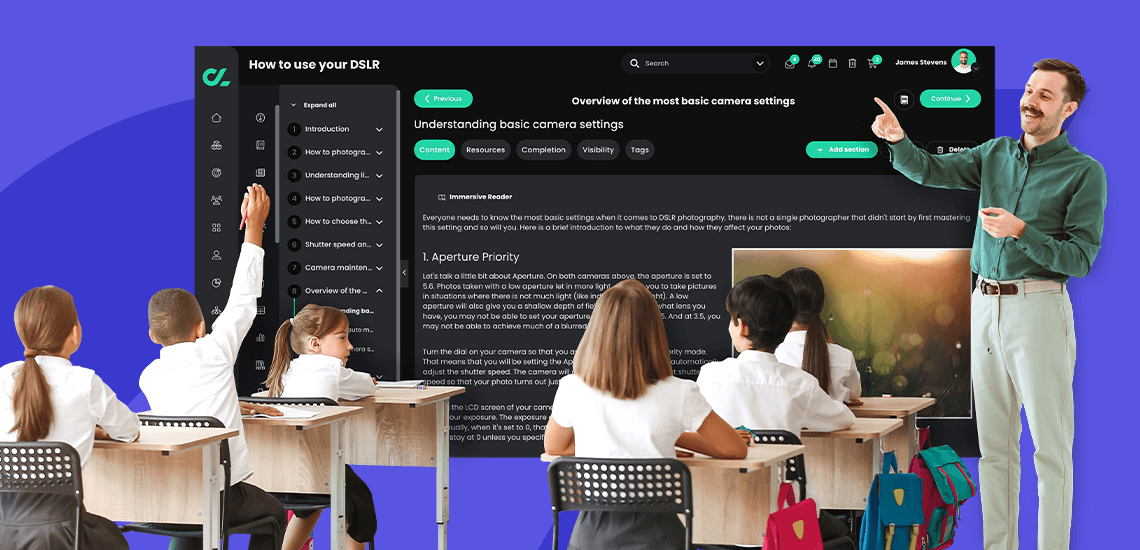In the constantly evolving educational landscape, blended learning has established itself as a vital strategy, harmonizing the strengths of traditional classroom instruction with the innovation of online learning. This approach has proven especially critical in adapting to the diverse needs of today’s learners and the challenges of a global, digital age. This updated blog provides fresh insights and practical tips for educators looking to effectively incorporate blended learning into their classrooms, reflecting the latest trends and technological advancements.
5 Tips for incorporating blended learning in the classroom
As blended learning becomes increasingly integral to modern education, understanding how to effectively implement this model is key for educators. Here are five updated tips for integrating blended learning strategies into your classroom, ensuring a dynamic, engaging, and effective learning environment.
1. Leverage the latest edtech tools
Updated insight: Beyond traditional learning management systems (LMS), explore the latest edtech tools that foster interactive and personalized learning experiences. Tools such as AI tutors for personalized assistance, VR for immersive learning experiences, and collaborative online platforms can significantly enhance engagement and understanding. Stay informed about new technologies and consider their potential impact on your teaching strategy.
2. Design for flexibility and accessibility
Contemporary approach: Ensure that your blended learning design is flexible enough to accommodate the varied needs of your students, including those with disabilities or those who may have limited access to technology. Use universal design principles to create content that’s accessible on multiple devices and considerate of different learning preferences. Incorporate asynchronous elements that allow students to learn at their own pace, alongside synchronous sessions for real-time interaction.
3. Foster a collaborative learning environment
Enhanced strategy: Use technology to break down the walls of the traditional classroom and encourage collaboration not just among students, but also between students and the wider global community. Platforms that facilitate project-based learning, peer reviews, and group discussions can replicate the collaborative dynamics of a physical classroom online, enriching the learning experience.
4. Integrate data analytics for personalized learning
Innovative use: With the advancement in learning analytics, educators can now tailor the learning experience to individual student needs more effectively. Use data from your LMS to track student progress, identify areas where they may be struggling, and adjust your teaching approach accordingly. Personalized feedback and adaptive learning paths based on real-time data can significantly improve student outcomes.
5. Provide continuous training and support for educators
Key consideration: For blended learning to be successful, educators themselves need ongoing support and training in both the pedagogical and technical aspects of blended learning. Invest in professional development opportunities that focus on the effective integration of technology into teaching. Peer mentoring and communities of practice can also be invaluable resources for sharing best practices and overcoming common challenges.
Implementing blended learning: Steps to success
Start small: Begin by integrating one or two blended learning activities into your curriculum to see what works best for you and your students.
Solicit feedback: Regularly ask for feedback from your students on their learning experience and be prepared to adapt your approach based on their insights.
Reflect and iterate: Continuously reflect on your experiences and be willing to iterate on your blended learning design to enhance its effectiveness over time.
Embracing the blended learning journey
Incorporating blended learning into the classroom is not a one-size-fits-all process but a dynamic journey that evolves with the changing needs of students and the advancement of technology. By embracing these updated tips and remaining committed to continuous learning and adaptation, educators can create enriched learning environments that prepare students for the complexities of the modern world.
Brochure: Using CYPHER for blended learning







